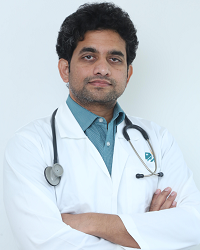Could not find what you are looking for?
- Diseases and Conditions
- Lung Cancer - Early Signs, Risk Factors, Diagnosis, and Treatment Explained
Lung Cancer - Early Signs, Risk Factors, Diagnosis, and Treatment Explained
Lung cancer is one of the most common and serious forms of cancer, but understanding it clearly is the first step toward taking control of your health. With so much information available, it can feel overwhelming to know where to begin. This comprehensive guide is designed to provide clear, compassionate, and easy-to-understand insights about lung cancer—covering its symptoms, how it is diagnosed, treatment options, and what you can expect along the way. Our aim is to help you feel informed, supported, and empowered as you navigate this condition.
What Is Lung Cancer?
Lung cancer is a cancer that forms in the tissues of the lung, usually in the cells that line the air passages. It is the leading cause of cancer death in both men and women worldwide. Lung cancer occurs when the cells in the lung start to grow and divide uncontrollably, forming a tumor. If left untreated, the tumor can grow, destroy the lung tissue, and spread to other parts of the body (metastasis).
Early detection is a critical factor for successful treatment. When found in its earliest stages, lung cancer can be highly treatable with surgery. Advances in medicine, especially with targeted therapies and immunotherapy, have also dramatically improved the prognosis for patients with more advanced disease.
Types of Lung Cancer
Lung cancer is not a single disease. It is a group of several related cancers that are classified into two main types based on how the cancer cells look under a microscope. This distinction is crucial because these two types behave differently and require different treatment approaches.
1. Non-Small Cell Lung Cancer (NSCLC): This is the most common type of lung cancer, accounting for about 85% of all cases. It tends to grow and spread more slowly than small cell lung cancer. The three main subtypes of NSCLC are:
- Adenocarcinoma: The most common type of lung cancer, especially in non-smokers. It usually begins in the outer parts of the lungs.
- Squamous Cell Carcinoma: Strongly linked to a history of smoking, this type often starts in the large airways near the middle of the lungs.
- Large Cell Carcinoma: A less common type that can appear anywhere in the lung and tends to grow quickly.
2. Small Cell Lung Cancer (SCLC): This is a less common but more aggressive type of lung cancer, accounting for about 10-15% of all cases. It tends to grow very quickly and spread to other parts of the body, such as the brain, liver, and bones, even in its early stages. SCLC is almost exclusively found in people with a history of heavy smoking.
What Are the Causes and Risk Factors for Lung Cancer?
The single biggest cause of lung cancer is tobacco smoke. However, many people who get lung cancer have never smoked. The disease can be caused by a combination of factors, including environmental exposures and genetics.
Lifestyle Risk Factors:
- Smoking: This is by far the leading cause of lung cancer. Cancer-causing chemicals in tobacco smoke damage the cells that line the lungs. The risk of developing lung cancer increases with the number of years and cigarettes smoked.
- Secondhand Smoke: Breathing in the smoke of others can significantly increase your risk of developing lung cancer.
Environmental Risk Factors:
- Radon: This is a naturally occurring radioactive gas that is the second leading cause of lung cancer. It is invisible, odorless, and tasteless and can accumulate inside homes and buildings.
- Occupational Exposures: Certain workplace exposures can increase the risk of lung cancer. These include exposure to asbestos, arsenic, chromium, and nickel.
- Air Pollution: Studies have shown that long-term exposure to high levels of air pollution can slightly increase the risk of developing lung cancer.
Genetic and Medical Risk Factors:
- Personal or Family History: If you have had lung cancer before, you are at a higher risk of developing another one. A family history of lung cancer may also increase your risk.
- Previous Radiation Therapy: Patients who have received radiation to the chest for other cancers, such as breast cancer or lymphoma, have a higher risk of developing lung cancer.
- Genetic Mutations: In many cases of adenocarcinoma, especially in non-smokers, lung cancer is caused by specific genetic mutations in the cancer cells, such as those in the EGFR, ALK, or ROS1 genes.
What Are the Symptoms of Lung Cancer?
Unfortunately, many people with early-stage lung cancer do not have symptoms. By the time symptoms appear, the cancer may have already spread. However, it is vital to pay attention to your body and see a doctor if you notice any of these signs.
Common Early Signs:
- A Persistent Cough: A cough that doesn't go away or gets worse.
- Chest Pain: Pain in the chest, shoulder, or back that is not related to a cough.
- Shortness of Breath: Feeling winded or short of breath, even after mild exertion.
- Hoarseness: A change in your voice that lasts for more than a few weeks.
- Wheezing: A whistling sound when you breathe.
- Coughing Up Blood (Hemoptysis): This is a red flag and requires immediate medical attention.
Advanced Symptoms:
If the cancer has spread to other parts of the body, it may cause a variety of symptoms, including:
- Unexplained Weight Loss: Losing weight without trying.
- Bone Pain: A persistent ache in a bone.
- Headaches, Dizziness, or Seizures: If the cancer has spread to the brain.
- Yellowing of the Skin and Eyes (Jaundice): If the cancer has spread to the liver.
- Swelling: Swelling of the neck and face.
If you are at high risk for lung cancer and experience any of these symptoms, it is crucial to consult a doctor right away for an accurate diagnosis.
How Is Lung Cancer Diagnosed?
Diagnosing lung cancer requires a series of tests to confirm the presence of cancer, determine its type, and see if it has spread.
Diagnostic Steps and Tests:
1. Physical Exam and Medical History: Your doctor will ask about your symptoms and risk factors, such as your smoking history.
2. Imaging Tests:
- Chest X-ray: Often the first test used to find any abnormal masses in the lungs.
- CT (Computed Tomography) Scan: A CT scan provides detailed, cross-sectional images of the chest and can reveal smaller tumors than a standard X-ray.
- PET (Positron Emission Tomography) Scan: A PET scan uses a special radioactive substance that is absorbed by fast-growing cancer cells, which makes them light up on the scan. This can help find cancer that has spread to other parts of the body.
3. Biopsy: A biopsy is the only way to confirm a diagnosis of lung cancer. A small sample of the suspicious tissue is removed and sent to a lab to be examined by a pathologist.
- Bronchoscopy: A thin, flexible tube with a camera is passed through the mouth or nose into the lungs to view the airways and take a tissue sample.
- Needle Biopsy: A needle is inserted through the chest wall to get a tissue sample from a tumor in the outer part of the lung.
4. Molecular Testing: If NSCLC is diagnosed, a sample of the tumor will be tested for specific gene mutations, such as EGFR, ALK, or ROS1. The results of these tests are crucial for determining if you are a candidate for targeted therapy or immunotherapy.
Staging and Grading of Lung Cancer
Staging is the process of finding out how much cancer is in the body and where it is located. It is the most important factor in deciding on a treatment plan and predicting the patient's prognosis.
1. Non-Small Cell Lung Cancer (NSCLC): The TNM staging system is used.
- T (Tumor): Describes the size and extent of the primary tumor.
- N (Node): Indicates whether the cancer has spread to nearby lymph nodes.
- M (Metastasis): Shows if the cancer has spread to distant parts of the body.
- The combination of these values gives the cancer its stage, from Stage I (the least advanced) to Stage IV (the most advanced).
2. Small Cell Lung Cancer (SCLC): Due to its tendency to spread early, SCLC is typically staged using a two-stage system:
-
- Limited Stage: The cancer is confined to one side of the chest and can be treated with a single radiation field.
- Extensive Stage: The cancer has spread beyond the limited stage.
What Are the Treatment Options for Lung Cancer?
The treatment for lung cancer is highly personalized and depends on the type and stage of the cancer, its molecular characteristics, and the patient's overall health.
1. Surgery
Surgery is the primary treatment for early-stage NSCLC. The goal is to remove the tumor and a margin of healthy tissue.
- Lobectomy: The removal of an entire lobe of the lung.
- Pneumonectomy: The removal of an entire lung.
- Video-Assisted Thoracoscopic Surgery (VATS): A minimally invasive surgical technique that uses small incisions and a camera to remove the tumor.
2. Medical Treatment (Chemotherapy, Targeted Therapy, Immunotherapy)
- Chemotherapy: Chemo uses powerful drugs to kill cancer cells throughout the body. It is a key part of the treatment for SCLC and is often used in combination with other treatments for NSCLC.
- Targeted Therapy: These drugs are designed to target specific genetic mutations in the cancer cells. For patients with a positive test for a gene like EGFR or ALK, targeted therapy can be very effective and cause fewer side effects than traditional chemotherapy.
- Immunotherapy: This is a groundbreaking treatment that helps a patient's own immune system recognize and attack cancer cells. Immunotherapy drugs, such as checkpoint inhibitors, are now a standard treatment for both early and advanced lung cancer.
3. Radiation Therapy
Radiation therapy uses high-energy rays to kill cancer cells. It can be used in several ways:
- As a Primary Treatment: For patients who are not candidates for surgery, radiation can be used as the main treatment, often combined with chemotherapy.
- Before or After Surgery: Radiation may be given before surgery to shrink the tumor or after surgery to kill any remaining cancer cells.
- Palliative Care: In advanced cases, radiation can be used to relieve symptoms like pain or bleeding.
4. Proton Therapy
Proton therapy is an advanced form of radiation that uses protons instead of X-rays. Because protons can be precisely controlled to release their energy directly at the tumor, it is especially beneficial for lung tumors located near the heart or esophagus, as it spares nearby healthy tissues.
Prognosis and Survival Rates for Lung Cancer
The prognosis for lung cancer has been steadily improving due to advances in diagnosis and treatment. The survival rate is highly dependent on the stage of the cancer at the time of diagnosis.
- Prognostic Factors: The most important factors affecting prognosis are the type and stage of the cancer, the patient's overall health, and the specific molecular characteristics of the tumor.
- Survival Rates: The 5-year survival rate for localized lung cancer (cancer confined to the lung) is approximately 63%. If the cancer has spread to nearby lymph nodes, the rate drops to about 35%. For metastatic (distant) disease, the 5-year survival rate is around 8%. These numbers are averages; your medical team can provide a more accurate prognosis based on your unique case.
Screening and Prevention of Lung Cancer
Lung cancer is difficult to screen for in the general population. However, screening is recommended for people at high risk.
Early Detection:
- Low-Dose CT (LDCT) Scan: The U.S. Preventive Services Task Force recommends yearly lung cancer screening with an LDCT scan for adults aged 50 to 80 who have a 20 pack-year smoking history and currently smoke or have quit within the past 15 years.
- Know Your Symptoms: If you are at high risk, pay close attention to any of the symptoms listed above and see a doctor immediately.
Prevention Strategies:
- Quit Smoking: The single most important way to prevent lung cancer is to quit smoking. Your risk starts to decrease the day you quit.
- Avoid Secondhand Smoke: Do not allow others to smoke in your home or car.
- Test for Radon: Test your home for radon and take steps to reduce it if levels are high.
For International Patients: Your Seamless Journey to Apollo Hospitals
Apollo Hospitals is a leading medical destination for international patients seeking high-quality and affordable cancer care. Our dedicated International Patient Services team is here to ensure your entire experience is as smooth and comfortable as possible, from your initial inquiry to your return home.
Our Services for International Patients Include:
- Travel and Visa Assistance: We will provide you with a visa invitation letter and help with travel arrangements.
- Airport Transfers: We will arrange for a car to pick you up from the airport.
- Personalized Care: A dedicated patient coordinator will be your single point of contact, assisting with hospital admission, language interpretation, and any other needs you may have.
- Accommodation: We can assist you with booking suitable accommodation for you and your family near the hospital.
- Post-Treatment Follow-up: We will stay in touch with you after your return home to ensure a smooth recovery.
Frequently Asked Questions (FAQs) About Lung Cancer
Q1: Is Lung Cancer curable?
A: Yes, lung cancer is curable, especially when it is diagnosed at an early stage. When the cancer is found before it has spread, surgery alone can often lead to a cure. Even for more advanced cases, modern treatments like targeted therapy and immunotherapy are helping people live longer, healthier lives.
Q2: What is the survival rate for Lung Cancer?
A: The survival rate varies significantly by the type and stage of the cancer. The 5-year survival rate for localized lung cancer is approximately 63%. For metastatic disease, it is much lower, but these numbers are rapidly improving with new treatments. Your doctor can provide a more accurate prognosis based on your specific case.
Q3: What are the side effects of Lung Cancer treatment?
A: Side effects vary with the type of treatment.
- Surgery: Can cause pain, fatigue, and shortness of breath.
- Chemotherapy: Common side effects include nausea, fatigue, hair loss, and a weakened immune system.
- Immunotherapy: Can cause a range of side effects as the immune system is activated, including fatigue, rash, and flu-like symptoms.
- Radiation: May cause skin irritation, fatigue, and a cough. Your medical team will work closely with you to manage these side effects effectively.
Q4: Can Lung Cancer come back (recurrence)?
A: Yes, there is a risk of recurrence, especially in the first few years after treatment. This is why regular follow-up appointments and monitoring are crucial for early detection of any relapse.
Q5: What is the typical recovery time after Lung Cancer surgery?
A: Recovery time depends on the extent of the surgery. For a minimally invasive procedure, recovery may take a few weeks. For a more extensive surgery, such as a lobectomy, full recovery can take a few months. Your surgeon will provide a detailed recovery plan.
Q6: Can a non-smoker get Lung Cancer?
A: Yes. While smoking is the leading cause, a significant number of lung cancer cases occur in people who have never smoked. These cases are often linked to genetic mutations, radon exposure, or other environmental factors.
Q7: What is the difference between non-small cell and small cell lung cancer?
A: The main difference is how the cancer cells look under a microscope. NSCLC cells are larger and tend to grow more slowly, while SCLC cells are smaller and are more aggressive. The treatments for these two types of cancer are also very different.
Q8: What is a "pack-year" in lung cancer screening?
A: A pack-year is a way of measuring a person's smoking history. It is calculated by multiplying the number of packs of cigarettes smoked per day by the number of years the person has smoked. For example, a person who smoked one pack a day for 20 years has a 20 pack-year history.
Q9: Is there any way to prevent Lung Cancer?
A: The best way to prevent lung cancer is to quit smoking, avoid secondhand smoke, and test your home for radon.












